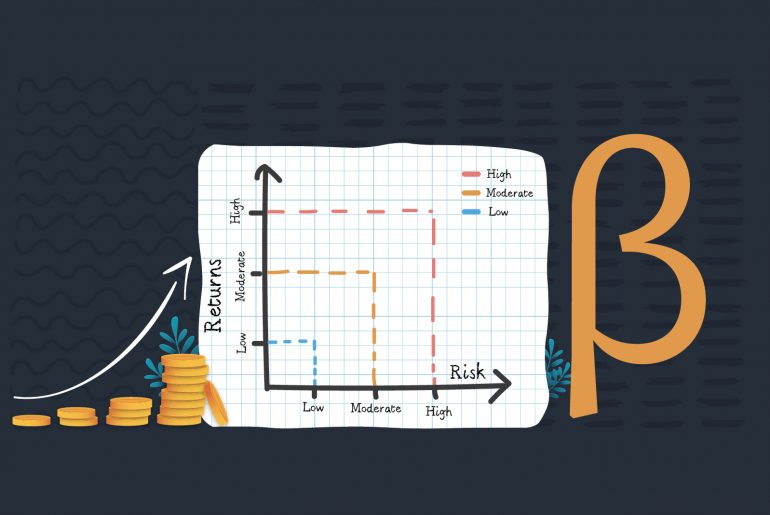Last Updated on Mar 17, 2025 by Aishika Banerjee
Table of Contents
8 best dividend-paying mutual funds
| Name | AUM (Rs. in cr.) | Expense Ratio (%) | Volatility (%) | Minimum Lumpsum (Rs.) | Exit Load (%) | Absolute Returns – 1Y (%) | 3Y Avg Annual Rolling Return (%) |
| Aditya Birla SL Dividend Yield Fund | 976.55 | 1.59 | 10.96 | 1,000.00 | 1.00 | 33.78 | 25.79 |
| ICICI Pru Dividend Yield Equity Fund | 2,103.78 | 0.70 | 8.38 | 5,000.00 | 1.00 | 31.68 | 32.67 |
| Tata Dividend Yield Fund | 554.48 | 0.59 | 10.95 | 5,000.00 | 1.00 | 30.70 | 0.00 |
| HDFC Dividend Yield Fund | 3,601.67 | 0.48 | 9.75 | 100.00 | 1.00 | 30.47 | 0.00 |
| UTI Dividend Yield Fund | 3,108.90 | 1.44 | 9.55 | 5,000.00 | 1.00 | 24.88 | 23.25 |
| Sundaram Dividend Yield Fund | 567.51 | 1.45 | 8.91 | 5,000.00 | 1.00 | 24.00 | 23.31 |
| Templeton India Equity Income Fund | 1,565.76 | 1.33 | 8.35 | 5,000.00 | 1.00 | 23.96 | 31.89 |
| LIC MF Dividend Yield Fund | 91.79 | 1.45 | 9.72 | 5,000.00 | 1.00 | 21.72 | 22.37 |
Note: The data is dated 1st October 2023. The following parameters are used on Tickertape Mutual Fund Screener to get the list of the best dividend-paying mutual funds:
- Category > Equity > Dividend Yield Fund
- Absolute Returns – 1Y: Sort from highest to lowest.
You can add multiple parameters or create custom filters to analyse the mutual funds.
Details of the top 3 dividend-yielding mutual funds in India
Aditya Birla SL Dividend Yield Fund
This was launched on 27th February 2003 by Aditya Birla Sun Life AMC Limited. As of 1st October 2023, Aditya Birla SL Dividend Yield Fund has an NAV of Rs. 354.39. The CAGR for 3-yr and 5-yr is 27.60% and 16.41%, respectively. The minimum lump sum investment amount required is Rs. 1,000. Click here to learn about its performance and fund managers.
ICICI Pru Dividend Yield Equity Fund
This was launched on 16th May 2014 by ICICI Prudential Mutual Funds. As of 1st October 2023, ICICI Pru Dividend Yield Equity Fund has an NAV of Rs. 38.53. The CAGR of 3-yr and 5-yr is 35.26% and 17.68%, respectively. The minimum lump sum investment amount is Rs. 5,000. Analyse the fund thoroughly and compare it with its peers here.
Tata Dividend Yield Fund
This was launched on 3rd May 2021 by Tata Mutual Fund. As of 1st October 2023, Tata Dividend Yield Fund has an NAV of Rs. 14.41. The minimum lump sum investment amount is Rs. 5,000. The fund is under a very high-risk category. Learn more about the fund before investing here.
Dividends are an important aspect of equity-related instruments. Some companies share a part of their profits with the shareholders in the form of dividends. While others don’t offer dividends; instead, they reinvest the profits to establish the company. Let’s understand dividend paying mutual funds in detail.
What are dividend-paying mutual funds?
Some companies declare dividends on their stocks. Only when a company can make profits can it pay dividends. Hence, the financials of these companies would be strong. Like any other mutual fund, the performance of dividend mutual funds is subjected to market conditions. These are considered moderate to high-level risk instruments.
Though the most common pay-out for dividend mutual funds is annual, a few schemes pay it monthly, quarterly, or daily. Though most companies strive to pay dividends per the agreement, it is never guaranteed. The amount of the dividend is also not fixed. The Net Asset Value (NAV) should reach the critical value for the fund house to pay the dividends. The fund managers will not limit themselves to the dividend yield but look at several other company growth prospects before investing.
Who should invest in dividend paying mutual funds?
Dividend paying mutual funds can be ideal for first-time inventors. Even investors looking for stable income can opt for these funds. However, as mentioned earlier, the dividend is not guaranteed as it depends on the companies and the market conditions.
Features of dividend paying mutual funds
The two features of dividend mutual funds are
- Asset allocation: According to Securities and Exchange Board of India (SEBI) rules, a dividend yield mutual fund must invest at least 65% of the fund corpus in equity and equity-related instruments.
- Risk-reward ratio: As the dividend paying mutual funds deal with stocks, the performance can be volatile. However, compared to other equity-related schemes, dividend mutual funds are less volatile.
Dividend from mutual fund taxability
- If the investment holding period is less than 1 yr, the returns are considered short-term capital gains and taxed at 15%.
- If the investment holding period is more than a year and the returns are over Rs 1 lakh per annum, you are taxed at 10%. No taxes are levied if the returns are less than Rs 1 lakh per annum.
Advantages of dividend paying mutual funds
The advantages that dividend mutual funds can provide an investor are as follows:
- Generally, the underlying companies have strong financials.
- These funds can offer a high yield on dividends in the long term.
- Investors can be exposed to equity funds with less risk.
- Investors can expect stable income at regular intervals.
Disadvantages of dividend paying mutual funds
These are associated with disadvantages as well, as follows:
- When compared to other equity-based schemes, dividend mutual funds may not perform well during a bull market.
- High dividend provision can be advantageous for the investor initially, but the company may not have enough opportunity to expand.
Difference between growth and dividend mutual funds
Similar to dividends, growth is an aspect of mutual funds. In dividend mutual funds, the profits are paid to the investors, while in the case of growth, the profits are reinvested in the fund. Compared to the dividend mutual funds, the profits in the growth option are higher in the long term. Growth mutual funds are preferred by investors who are not looking for regular cash flows from the investment.
Excel your mutual fund analysis with Tickertape Mutual Fund Screener
Finding the right investment that aligns with your investment goals and risk tolerance is difficult, especially when you are given several options. For this, you need to understand each and every mutual fund product, the performance metrics, the risk involved, etc. and compare them to find the right one for you. This is where the Tickertape Mutual Fund Screener comes to your rescue. It allows you to find the right mutual fund based on your financial goals.
- Preloaded filters
- 50+ filters
- Custom filters
- Custom mutual fund universe
- Pre-built screens
- Custom screens
- Export data offline
- Individual fund analysis
- Mutual fund Watchlist
Kickstart your investment journey today by logging on to Tickertape and linking your broker account. Before investing, ensure you understand mutual funds and their types and then proceed to analyse the fundamentals of a fund. Not just that, but keep your investment goals and risk appetite in mind. Happy screening and investing!
FAQs
1. What is a dividend in mutual funds?
The dividend is a portion of profits provided by a company to the shareholders for investing in their stock.
2. Are non-residents of India eligible for dividend paying mutual funds?
Yes. Non-residents of India are eligible to invest in dividend paying mutual funds.
3. How to know if the fund manager has invested your money in a dividend mutual funds scheme?
As per the SEBI rules, the mutual funds need to disclose entire portfolios of all schemes monthly on their website.
4. What are the top monthly dividend paying mutual funds in India?
You can use the Tickertape Mutual Fund Screener to find the top monthly dividend paying mutual funds in India based on returns. However, the pay-out schedule on the dividend mutual funds varies with the scheme.
5. Do mutual funds pay dividends?
A dividend is a portion of the company’s profits paid to the shareholders. But not all mutual funds pay dividends. Some companies reinvest the profit back into the company for growth and expansion.
- Best EV Stocks in India (2025): Electric Vehicle Companies - Apr 11, 2025
- List of Best Growth Stocks on NSE: Fast-Growing Companies in India - Apr 11, 2025
- Potential Breakout Stocks in India: High Volume Shares on NSE - Apr 11, 2025




